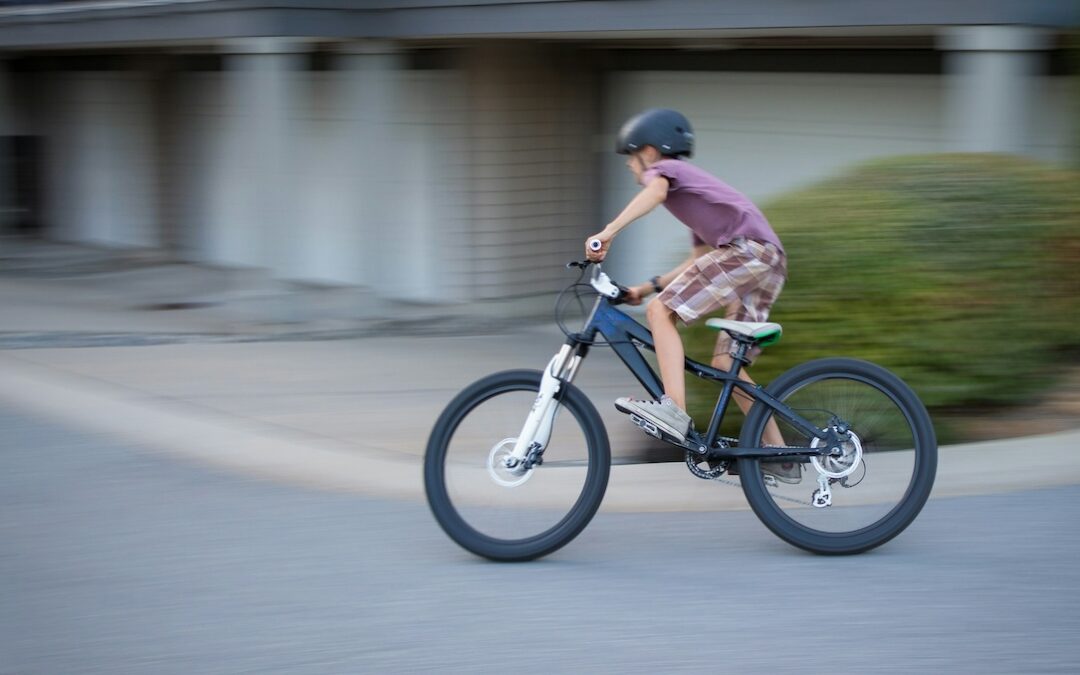Momentum activities like public speaking and leadership share an attribute with riding a bike.
Both get easier when you get good at it.
We don’t make the mistake of thinking a child will never be able to ride a bike, even though it’s difficult. But it’s easy to believe that a child will never be a leader or a proficient speaker.
Concluding that students (or teachers) are good at speaking or leadership are talented or born with the ability to do them is incorrect. They’re not. They have earned a skill that translates to momentum.
Just like riding a bike.
There’s a difference between “They’re a great leader” and “They’re born to lead.”
And there’s a difference between ” This child is not a leader right now” and “This child will never lead.”
Activities requiring momentum tend to be noticed twice: once when kids struggle with them and once when they excel at them. Often, we overlook the learning process and the valuable lessons that lead to improvement.
How can you bridge the gap (even though you may never see the results)? These three strategies are key to student leadership development.
1. TEACH the scope and skills of leadership.
You can’t grow when you don’t know. Kids quickly learn to ride a bike when they see the benefits. The wheel wobbles, falls, scrapes, and bruises don’t hinder them in the learning phase because they know their path. When the learning is complete, they are bike riders. Suddenly, their identity changes.
How does a child know if they’re on a leadership journey when they’re not specifically taught about leadership? They don’t know the path, let alone whether they’ve arrived at the destination of leadership excellence.
Role models, language, frameworks, practice, reflection, and mentoring are all part of students’ ascension to leadership.
2. Make leadership ACCESSIBLE.
It is reasonable to expect every child to be able to ride a bike. For those facing physical challenges, alternative options are available to experience the joy of riding.
But I suspect we are not so generous when it comes to leadership. It’s often only available to the elite few—the most popular or the child who is already responsible rather than the student who needs to be given responsibility.
But Good leadership is needed in every area of life, including families, work, and communities. Every child who leaves your class or your school is a future leader. Let’s hope they succeed in that endeavour.
3. Make leadership REAL.
The fall in family size is the biggest unspoken challenge to leadership development facing every primary school. With two-child families the norm in most of the developed world, the opportunities for children to practise leadership at home have dramatically diminished.
It was only two generations ago (when the mean number of children in a family was four) that the eldest children were quasi-parents. Leadership was real. They were relied upon to carry out their duties.
Now, most real leadership opportunities for kids are found at school or among community groups. Teachers are then forced to stand back at times and share responsibilities and tasks among students to carry out individually or in teams.
Of course, this carries risk, but it needn’t be an impediment to real leadership development. There are daily opportunities to take real responsibility for developing student leadership.
SIDE NOTE: Five decades ago, as captain of my primary school football team, I organised parents to drive the team to away games. No permission notes were needed. Those opportunities aren’t available today!!!
Finally…….
Leadership development starts with twin positive mindsets. First, all children are capable of leadership. Second, leadership is an essential life skill that benefits both the individual and the community at large.
These two mindsets help bridge the gap between poor and good, whether in leadership, public speaking, or bike riding. The contexts differ, but the attainment outcome is the same.
++++++++++++++++++++++++++++++++++++++++++++++++++++++++++++++
NOTE: When you’re ready to bridge the gap and reach for student leadership excellence, the Young Leaders Program offers everything you need (lessons, leadership framework, modelling, mentoring, journalling) to start senior students on their leadership journey. Find out more.

